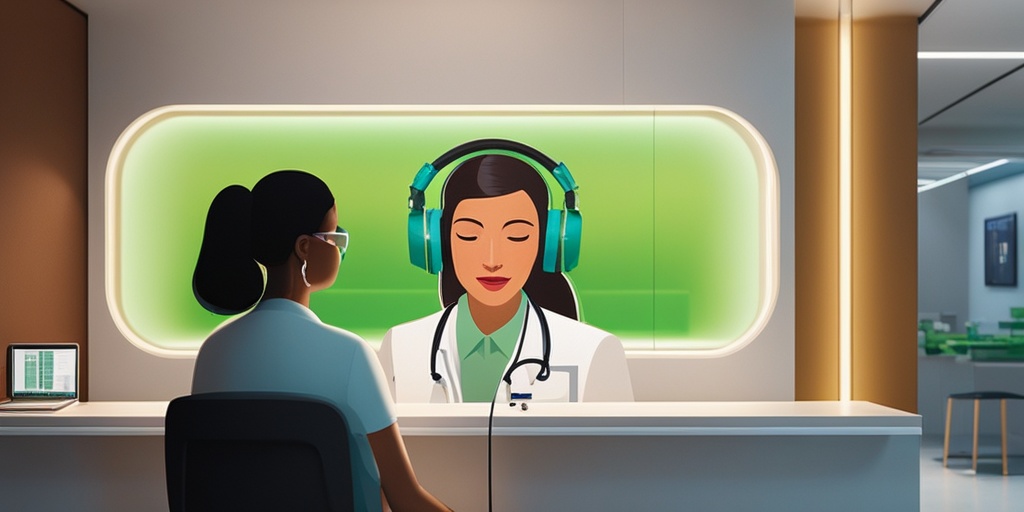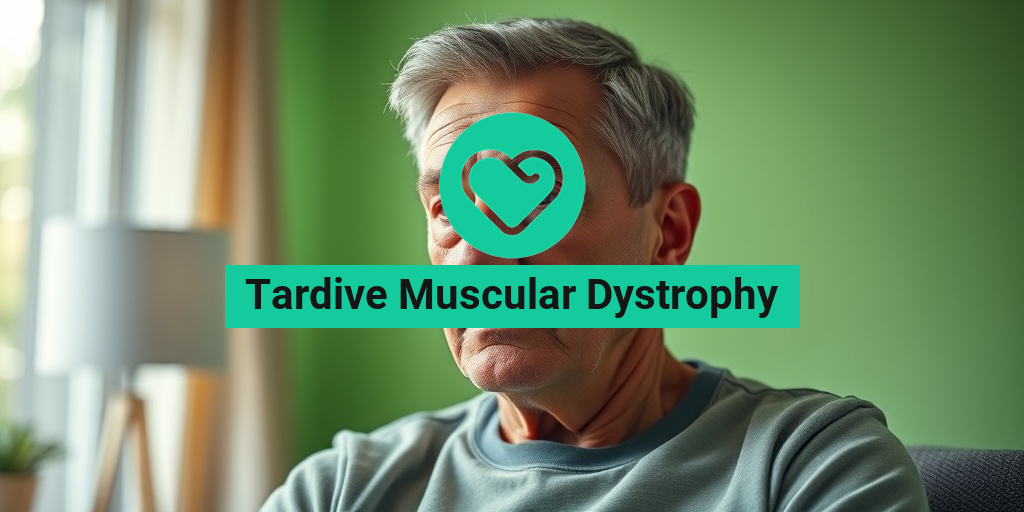“`html
What Is Deafness?
Deafness is a condition characterized by a partial or complete inability to hear sounds. It can affect one ear (unilateral deafness) or both ears (bilateral deafness). The severity of deafness can vary widely, from mild hearing loss to profound deafness, where no sound is perceived at all. Understanding deafness is crucial, not only for those who experience it but also for their families and communities.
Deafness Definition
The definition of deafness encompasses a range of hearing impairments. It is often classified based on the degree of hearing loss, which can be measured in decibels (dB). Here are some common classifications:
- Mild Deafness: Hearing loss between 26-40 dB, where soft sounds are difficult to hear.
- Moderate Deafness: Hearing loss between 41-55 dB, making normal conversation challenging.
- Severe Deafness: Hearing loss between 56-70 dB, where loud sounds may be heard, but speech is often inaudible.
- Profound Deafness: Hearing loss greater than 70 dB, where sounds are not perceived.
Causes of Deafness
Deafness can arise from various factors, including:
- Genetic Factors: Some individuals are born with hearing impairments due to genetic mutations.
- Age-Related Hearing Loss: Presbycusis is a common condition that affects older adults, leading to gradual hearing loss.
- Noise Exposure: Prolonged exposure to loud noises can damage the hair cells in the inner ear, resulting in hearing loss.
- Infections: Certain infections, such as meningitis or ear infections, can lead to temporary or permanent deafness.
Types of Deafness
Understanding the different types of deafness is essential for effective treatment and management. Here are the primary types:
Conductive Deafness
Conductive deafness occurs when sound waves cannot efficiently travel through the outer ear canal to the eardrum and the tiny bones of the middle ear. This type of deafness can often be treated with medical or surgical interventions. Common causes include:
- Earwax buildup
- Fluid in the middle ear
- Perforated eardrum
- Otosclerosis (abnormal bone growth in the ear)
Sensorineural Deafness
Sensorineural deafness is caused by damage to the inner ear or the auditory nerve pathways to the brain. This type of hearing loss is often permanent and can be due to:
- Genetic factors
- Aging
- Exposure to loud noise
- Viral infections
Mixed Deafness
Mixed deafness is a combination of conductive and sensorineural hearing loss. Individuals with mixed deafness may experience issues in both the outer/middle ear and the inner ear. Treatment may involve a combination of medical and surgical options, along with hearing aids.
Deafness in Animals
Interestingly, deafness is not limited to humans. Deafness in dogs and deafness in cats can occur due to genetic factors or aging. Pet owners should be aware of the signs of hearing loss in their furry companions, such as not responding to sounds or being easily startled.
Conclusion
Deafness is a complex condition that affects many individuals worldwide. Understanding its types and causes can help in seeking appropriate treatment and support. If you or someone you know is experiencing hearing loss, consider consulting a healthcare professional for guidance. For more evidence-based health answers, visit Yesil Health AI. Remember, early intervention can make a significant difference! 🌟
“`

“`html
Deafness Symptoms
Deafness, or hearing loss, can manifest in various ways, and recognizing the symptoms early is crucial for effective management and treatment. The symptoms can vary significantly depending on the severity and type of hearing loss. Here are some common signs to look out for:
1. Difficulty Hearing Conversations
One of the most noticeable symptoms of deafness is difficulty hearing conversations, especially in noisy environments. You might find yourself frequently asking people to repeat themselves or struggling to follow discussions in group settings.
2. Muffled Sounds
If sounds seem muffled or unclear, this could indicate a hearing issue. You may notice that you can hear people talking, but their words sound distorted or unclear.
3. Tinnitus
Tinnitus, or ringing in the ears, is often associated with hearing loss. This persistent noise can be distracting and may worsen in quiet environments. If you experience this symptom, it’s essential to consult a healthcare professional.
4. Withdrawal from Social Situations
People with hearing loss may begin to withdraw from social situations due to frustration or embarrassment over their inability to hear. This can lead to feelings of isolation and affect mental health.
5. Trouble Understanding Speech
Individuals with deafness may find it challenging to understand speech, particularly when multiple people are talking or when the speaker is not facing them. This can lead to misunderstandings and communication barriers.
6. Asking for Repetition
If you or someone you know frequently asks others to repeat themselves, it could be a sign of hearing loss. This behavior often indicates that sounds are not being processed correctly.
7. Changes in Behavior
Changes in behavior, such as increased irritability or frustration, can also be a symptom of deafness. These changes may stem from the challenges faced in communication and social interactions.
Causes of Deafness
Understanding the causes of deafness is essential for prevention and treatment. Deafness can result from a variety of factors, ranging from genetic predispositions to environmental influences. Here are some common causes:
1. Genetic Factors
Many cases of deafness are hereditary. Genetic mutations can affect the development of the auditory system, leading to congenital hearing loss. If there is a family history of hearing loss, the risk may be higher.
2. Age-Related Hearing Loss
As people age, they may experience presbycusis, a gradual loss of hearing that affects both ears. This type of hearing loss is often due to changes in the inner ear and can make it difficult to hear high-frequency sounds.
3. Noise Exposure
Prolonged exposure to loud noises can damage the hair cells in the inner ear, leading to noise-induced hearing loss. This is particularly common in occupations with high noise levels, such as construction or music.
4. Infections and Illnesses
Certain infections, such as otitis media (middle ear infection) or viral infections like measles and mumps, can lead to temporary or permanent hearing loss. Early treatment of these infections is crucial to prevent long-term damage.
5. Ototoxic Medications
Some medications can have harmful effects on hearing. These are known as ototoxic medications and can include certain antibiotics, chemotherapy drugs, and high doses of aspirin. Always consult a healthcare provider about potential side effects.
6. Physical Trauma
Injuries to the head or ear can result in hearing loss. This can occur from accidents, falls, or sports injuries. Protecting your head during activities can help reduce the risk of trauma-related deafness.
7. Other Medical Conditions
Conditions such as diabetes, cardiovascular disease, and autoimmune disorders can also contribute to hearing loss. Managing these underlying health issues is essential for maintaining overall auditory health.
Recognizing the symptoms and understanding the causes of deafness can empower individuals to seek help and explore treatment options. If you or someone you know is experiencing signs of hearing loss, it’s important to consult a healthcare professional for a comprehensive evaluation. 🦻
“`

“`html
Risk Factors for Deafness
Deafness, or the partial or complete inability to hear, can affect individuals of all ages and backgrounds. Understanding the risk factors for deafness is crucial for prevention and early intervention. Here, we explore various factors that may increase the likelihood of developing hearing loss.
Genetic Factors
One of the most significant risk factors for deafness is genetics. If you have a family history of hearing loss, you may be at a higher risk. Genetic mutations can lead to conditions such as:
- Usher syndrome – a condition that affects both hearing and vision.
- Waardenburg syndrome – characterized by hearing loss and pigmentation changes.
- Connexin 26 mutations – a common cause of congenital deafness.
Age-Related Factors
As we age, our bodies undergo various changes, and our hearing can be affected. Age-related hearing loss, known as presbycusis, typically begins around the age of 60. Factors contributing to this include:
- Natural wear and tear on the auditory system.
- Long-term exposure to loud noises over the years.
- Health conditions such as diabetes or hypertension.
Environmental Factors
Exposure to loud noises is a significant environmental risk factor for deafness. This can include:
- Occupational hazards – jobs in construction, manufacturing, or music can expose individuals to harmful noise levels.
- Recreational activities – attending concerts or using headphones at high volumes can also contribute to hearing loss.
Health Conditions
Certain health conditions can increase the risk of deafness. These include:
- Ear infections – chronic infections can damage the structures of the ear.
- Ototoxic medications – some medications can have side effects that affect hearing.
- Autoimmune diseases – conditions like lupus can impact hearing.
Other Contributing Factors
Additional factors that may contribute to the risk of deafness include:
- Smoking – tobacco use has been linked to an increased risk of hearing loss.
- Alcohol consumption – excessive drinking can lead to auditory nerve damage.
- Obesity – being overweight can affect blood flow to the ears, impacting hearing.
Diagnosing Deafness
Diagnosing deafness involves a series of assessments to determine the type and extent of hearing loss. Early diagnosis is essential for effective treatment and management. Here’s how the process typically unfolds:
Initial Consultation
The first step in diagnosing deafness is a consultation with a healthcare professional, often an audiologist or an ear, nose, and throat (ENT) specialist. During this appointment, the doctor will:
- Review your medical history.
- Discuss any symptoms you may be experiencing, such as difficulty hearing in certain situations or ringing in the ears (tinnitus).
Hearing Tests
After the initial consultation, a series of hearing tests will be conducted to assess your hearing ability. Common tests include:
- Tuning fork tests – used to evaluate hearing loss and determine whether it is conductive or sensorineural.
- Pure-tone audiometry – measures the faintest tones a person can hear at various frequencies.
- Speech audiometry – assesses the ability to hear and understand speech.
Imaging Tests
In some cases, imaging tests such as CT scans or MRIs may be recommended to identify any structural issues within the ear or auditory pathways. These tests can help diagnose:
- Tumors – such as acoustic neuromas.
- Abnormalities – in the ear structure that may contribute to hearing loss.
Follow-Up and Treatment Options
Once a diagnosis is made, the healthcare provider will discuss treatment options tailored to the individual’s needs. These may include:
- Hearing aids – devices that amplify sound for those with hearing loss.
- Cochlear implants – surgically implanted devices that provide a sense of sound to individuals with severe hearing loss.
- Therapies – such as auditory training or speech therapy.
Understanding the risk factors for deafness and the diagnostic process can empower individuals to seek help early and improve their quality of life. If you or someone you know is experiencing hearing difficulties, don’t hesitate to consult a healthcare professional. 🦻
“`

“`html
Treatment Options for Deafness
Deafness, defined as the partial or total inability to hear, can significantly impact an individual’s quality of life. Fortunately, there are various treatment options available that cater to different types and degrees of hearing loss. Understanding these options can empower individuals and their families to make informed decisions.
Types of Deafness
Before diving into treatment options, it’s essential to recognize that deafness can be categorized into several types:
- Conductive Deafness: This type occurs when sound waves cannot efficiently travel through the outer ear canal to the eardrum and the tiny bones of the middle ear.
- Sensorineural Deafness: This is caused by damage to the inner ear or the auditory nerve, often resulting from aging, exposure to loud noises, or genetic factors.
- Mixed Deafness: A combination of conductive and sensorineural hearing loss.
Hearing Aids
One of the most common treatments for deafness is the use of hearing aids. These electronic devices amplify sound, making it easier for individuals to hear. They come in various styles, including:
- Behind-the-ear (BTE): Worn behind the ear, suitable for all types of hearing loss.
- In-the-ear (ITE): Custom-made to fit the outer ear, ideal for mild to severe hearing loss.
- Completely-in-canal (CIC): Small and discreet, fitting deep in the ear canal, best for mild to moderate hearing loss.
Cochlear Implants
For individuals with severe to profound sensorineural deafness, cochlear implants may be a viable option. Unlike hearing aids, which amplify sound, cochlear implants bypass damaged portions of the ear and directly stimulate the auditory nerve. This surgical procedure can provide a sense of sound to those who receive little or no benefit from traditional hearing aids.
Assistive Listening Devices
In addition to hearing aids and cochlear implants, there are various assistive listening devices (ALDs) designed to enhance hearing in specific situations. These include:
- FM Systems: Use radio waves to transmit sound directly to the listener’s hearing aid.
- Infrared Systems: Use light waves to transmit sound, often used in theaters and classrooms.
- Loop Systems: Create a magnetic field that transmits sound directly to hearing aids equipped with telecoils.
Medical and Surgical Treatments
In some cases, medical or surgical interventions may be necessary. These can include:
- Ear Surgery: Procedures to correct structural problems in the ear, such as repairing a perforated eardrum.
- Medication: Certain medications can treat infections or conditions that may lead to hearing loss.
Rehabilitation and Support
Regardless of the treatment chosen, rehabilitation plays a crucial role in adapting to hearing loss. This may involve:
- Auditory Training: Helps individuals learn to interpret sounds and improve listening skills.
- Counseling: Provides emotional support and coping strategies for individuals and families.
Living with Deafness
Living with deafness presents unique challenges, but with the right support and resources, individuals can lead fulfilling lives. Understanding how to navigate daily activities and social interactions is vital for those who are deaf or hard of hearing.
Communication Strategies
Effective communication is key to maintaining relationships and participating in social activities. Here are some strategies:
- Sign Language: Learning sign language can be an invaluable tool for communication, especially in the deaf community.
- Speech Reading: Also known as lip reading, this technique involves understanding speech by observing the speaker’s lips, facial expressions, and body language.
- Written Communication: Using text messages, notes, or emails can facilitate conversations when verbal communication is challenging.
Adapting Your Environment
Making adjustments to your living and working environments can enhance comfort and accessibility:
- Visual Alerts: Install flashing lights for doorbells, alarms, and notifications to ensure you don’t miss important signals.
- Assistive Technology: Utilize devices like video phones or captioned telephones to improve communication.
Social Inclusion
Engaging with the community is essential for emotional well-being. Here are some tips for fostering social connections:
- Join Support Groups: Connecting with others who experience similar challenges can provide emotional support and practical advice.
- Participate in Deaf Events: Attend local deaf events or workshops to meet new people and learn more about deaf culture.
Education and Employment
Access to education and employment opportunities is crucial for personal growth. Consider the following:
- Advocacy: Advocate for your rights in educational and workplace settings to ensure necessary accommodations are provided.
- Resources: Utilize resources such as vocational rehabilitation services to assist with job placement and training.
Living with deafness may require adjustments, but with the right tools and support, individuals can thrive and lead rich, fulfilling lives. 🌟
“`

“`html
Frequently Asked Questions about Deafness
What is the definition of deafness?
Deafness refers to a partial or complete inability to hear. It can occur in one ear or both and can be caused by various factors, including genetics, age, exposure to loud noises, and certain medical conditions.
What are the characteristics of deafness?
Individuals with deafness may experience:
- Difficulty understanding speech, especially in noisy environments.
- Challenges in communicating verbally.
- Reliance on visual cues, such as lip-reading or sign language.
- Potential social isolation due to communication barriers.
What is the ICD-10 code for deafness?
The ICD-10 code for deafness varies depending on the type and cause. Common codes include:
- H90 – Conductive and sensorineural hearing loss.
- H91 – Unspecified hearing loss.
Can deafness occur in pets?
Yes, deafness can also affect animals, including deafness in dogs and deafness in cats. It can be congenital or acquired due to age or health issues. Signs may include not responding to sounds or commands.
What treatments are available for deafness?
Treatment options for deafness may include:
- Hearing aids to amplify sound.
- Cochlear implants for certain types of hearing loss.
- Speech therapy to improve communication skills.
- Sign language education for effective communication.
Is it possible to experience deafness in one ear?
Yes, deafness in one ear, also known as unilateral hearing loss, can occur due to various reasons, including infections, trauma, or congenital conditions. It may affect balance and sound localization.
Can deafness be prevented?
While not all cases of deafness can be prevented, some measures can reduce the risk, such as:
- Avoiding exposure to loud noises.
- Wearing ear protection in noisy environments.
- Regular hearing check-ups, especially for those at higher risk.
What should I do if I suspect I have deafness?
If you suspect you have deafness, it is important to consult a healthcare professional or an audiologist for a comprehensive hearing evaluation. Early detection can lead to better management and treatment options.
Are there resources available for the deaf community?
Yes, there are numerous resources available for the deaf community, including:
- Support groups and organizations that provide advocacy and education.
- Access to interpreters and communication services.
- Educational programs focused on sign language and deaf culture.
Can deafness affect mental health?
Yes, individuals with deafness may experience mental health challenges, including anxiety and depression, often due to communication barriers and social isolation. Seeking support from mental health professionals can be beneficial.
“`




